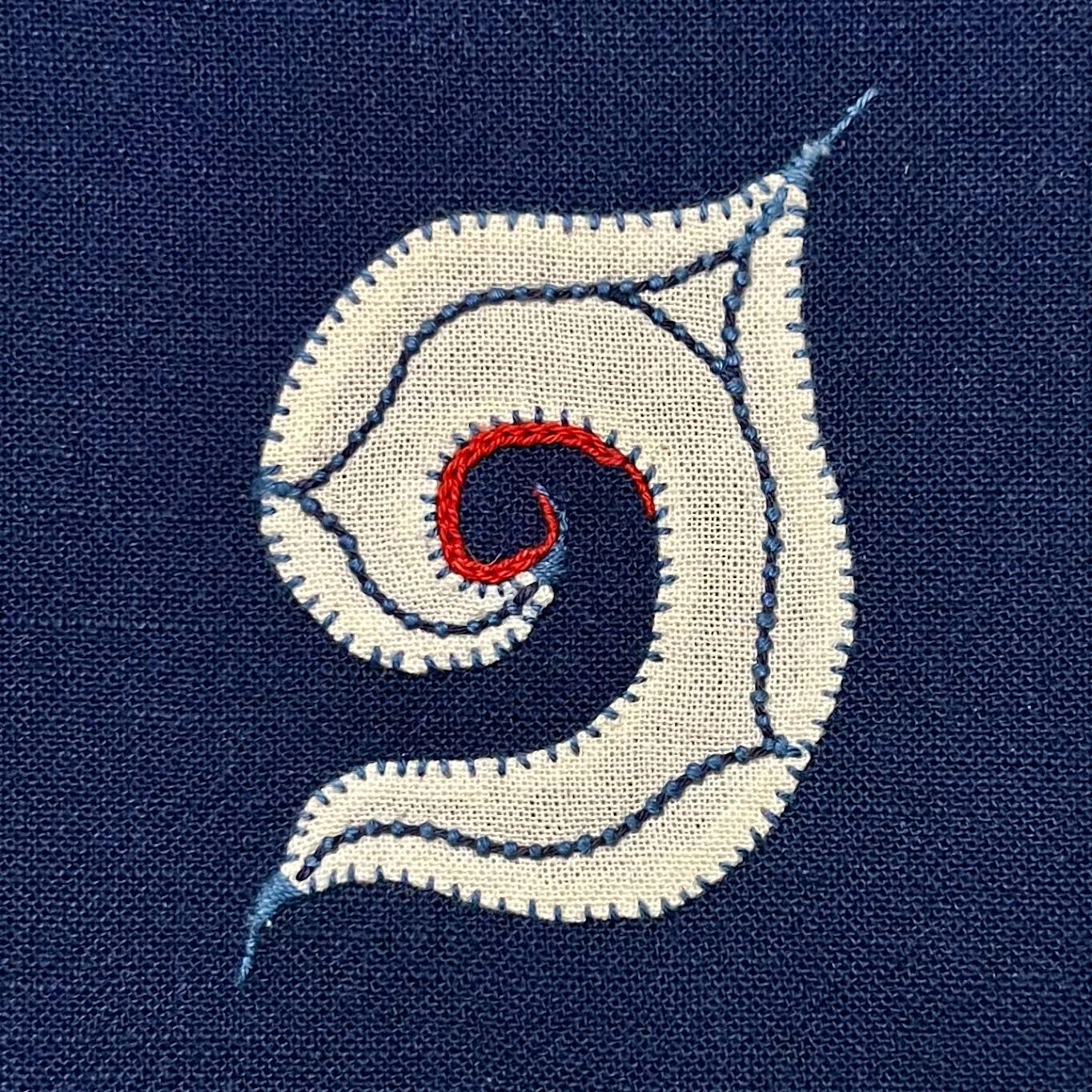
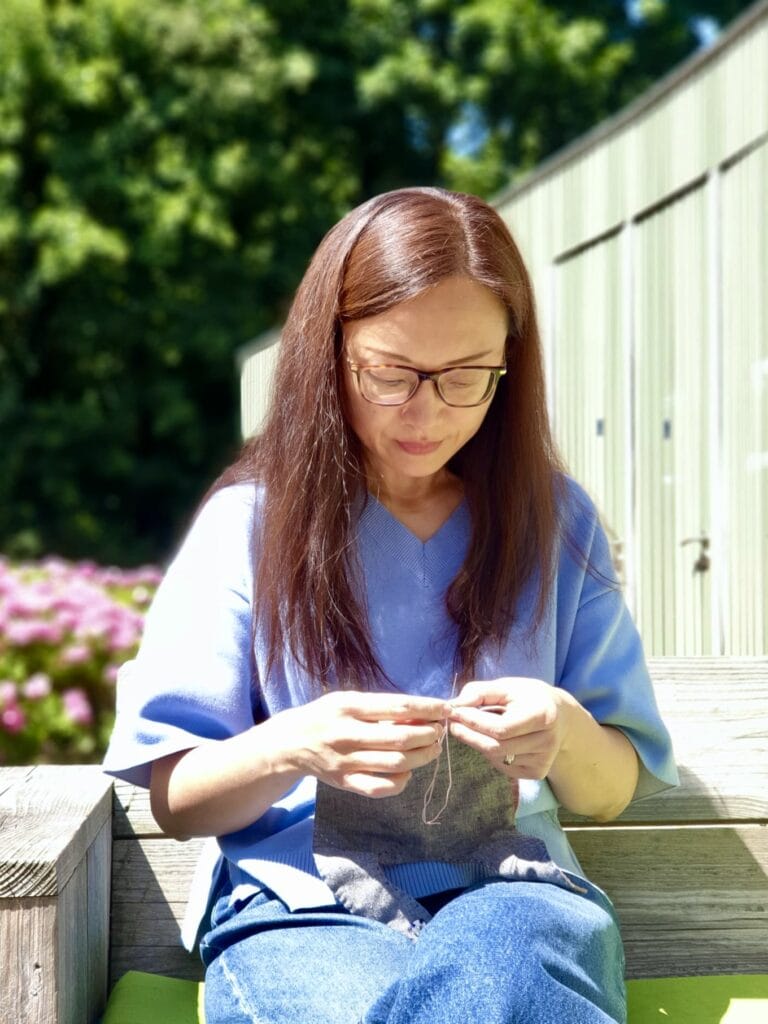
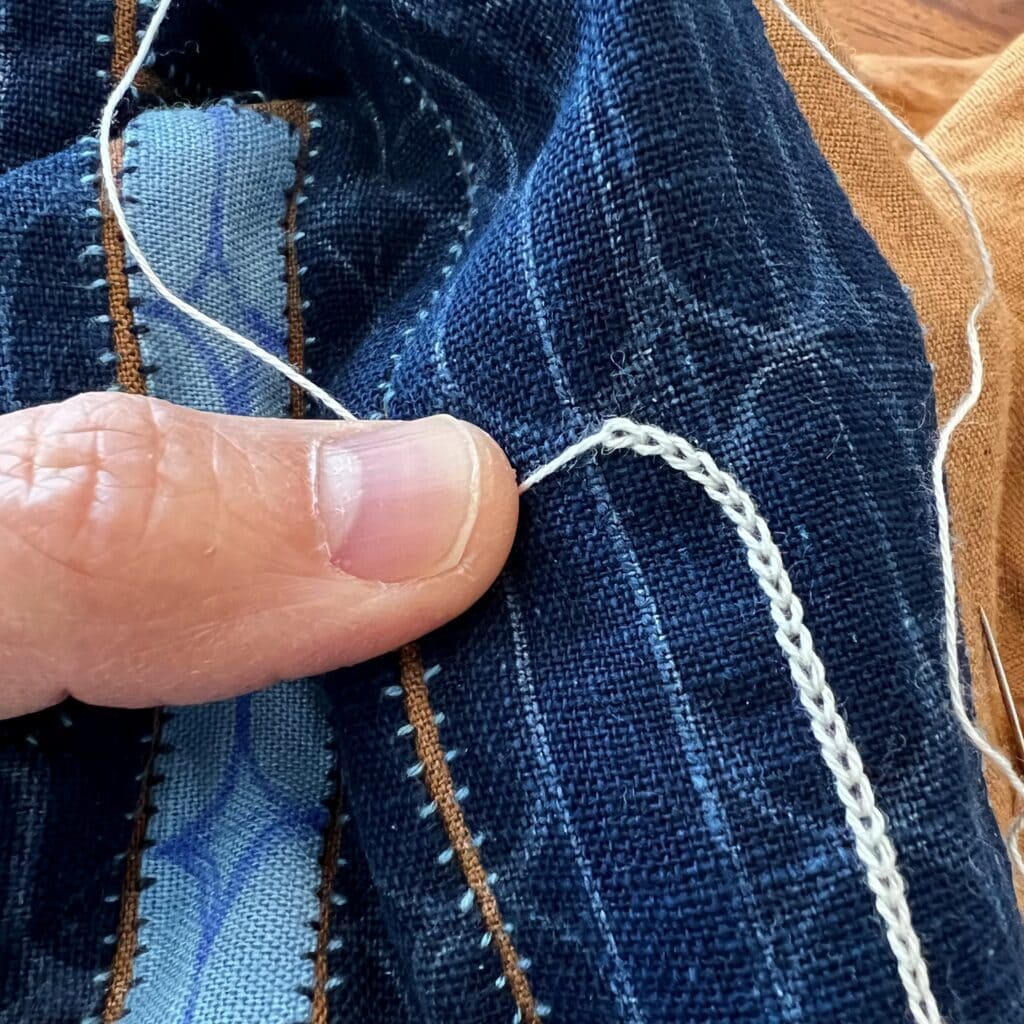
Selina Ben was born in Harbin and raised in northeastern China, in the Qingyuan Manchu Autonomous County, a beautiful place surrounded by mountains. In the spring, summer, and fall, she would spend time walking in the mountains with her friends, finding and collecting vegetables, mushrooms, fruits, and hazelnuts. The winters were exceedingly cold, and they would slide down the icy hills for fun.
A maker for as long as she can remember, Selina was taught to sew by her grandmother. She remembers her grandmother as very hardworking. She took care of animals and the land she farmed, as well as sewed clothing and quilts for her family. “She was a devout Buddhist and always told me that it’s important to be kind to others and to show gratitude, that everything has a purpose in this world and nothing should be wasted,” Selina says. She fondly remembers the hand sewn clothing made by her grandmother and her mother that she wore throughout her childhood, warming her in the snowy climate of the mountainous region.
After graduating college with a degree in English linguistics, Selina moved to the Netherlands to pursue an education in textile engineering and began a career in the fashion industry, developing outerwear collections. These experiences were revelatory — she was able to see first-hand the chemicals used and the vast amounts of waste created in the production process. These realities of the fashion industry were incongruous with Selina’s personal textile practice, which relates much more deeply to the handwork and resourcefulness so present in her childhood.
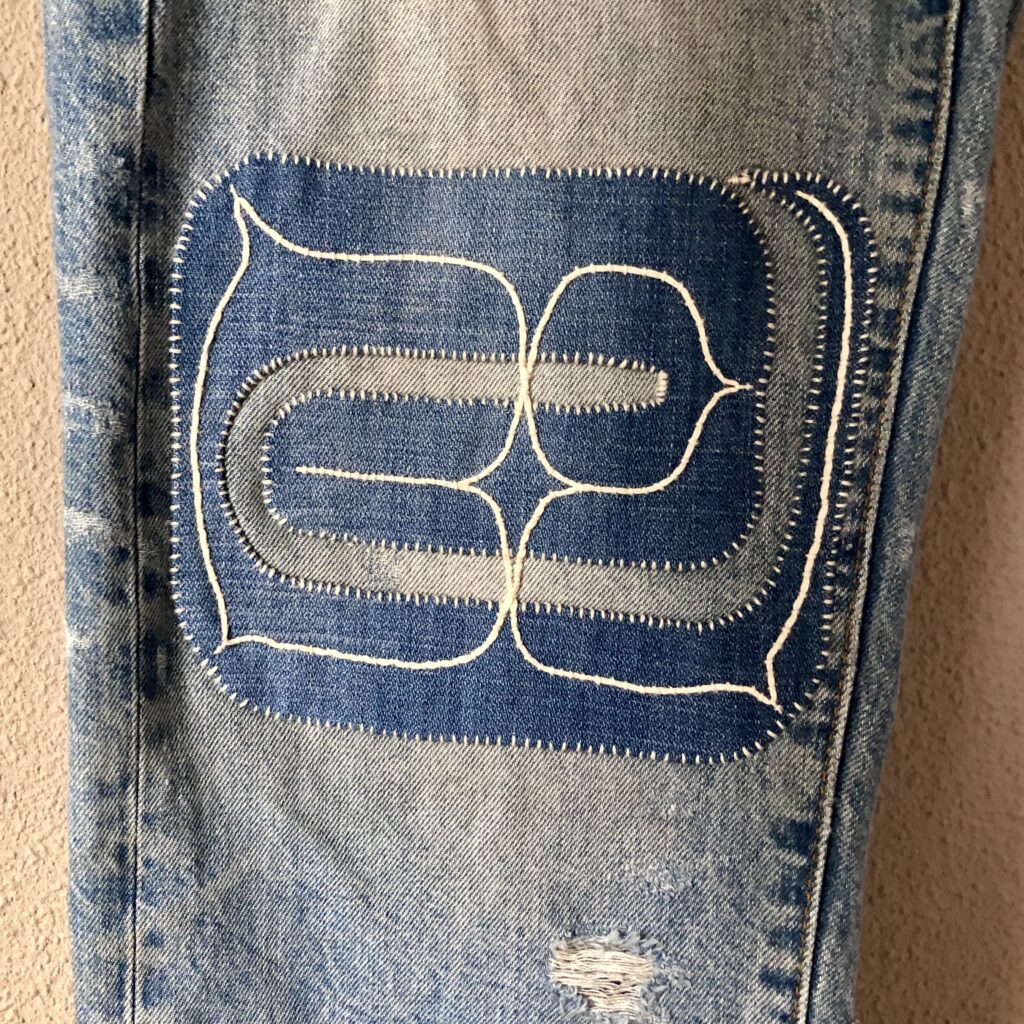
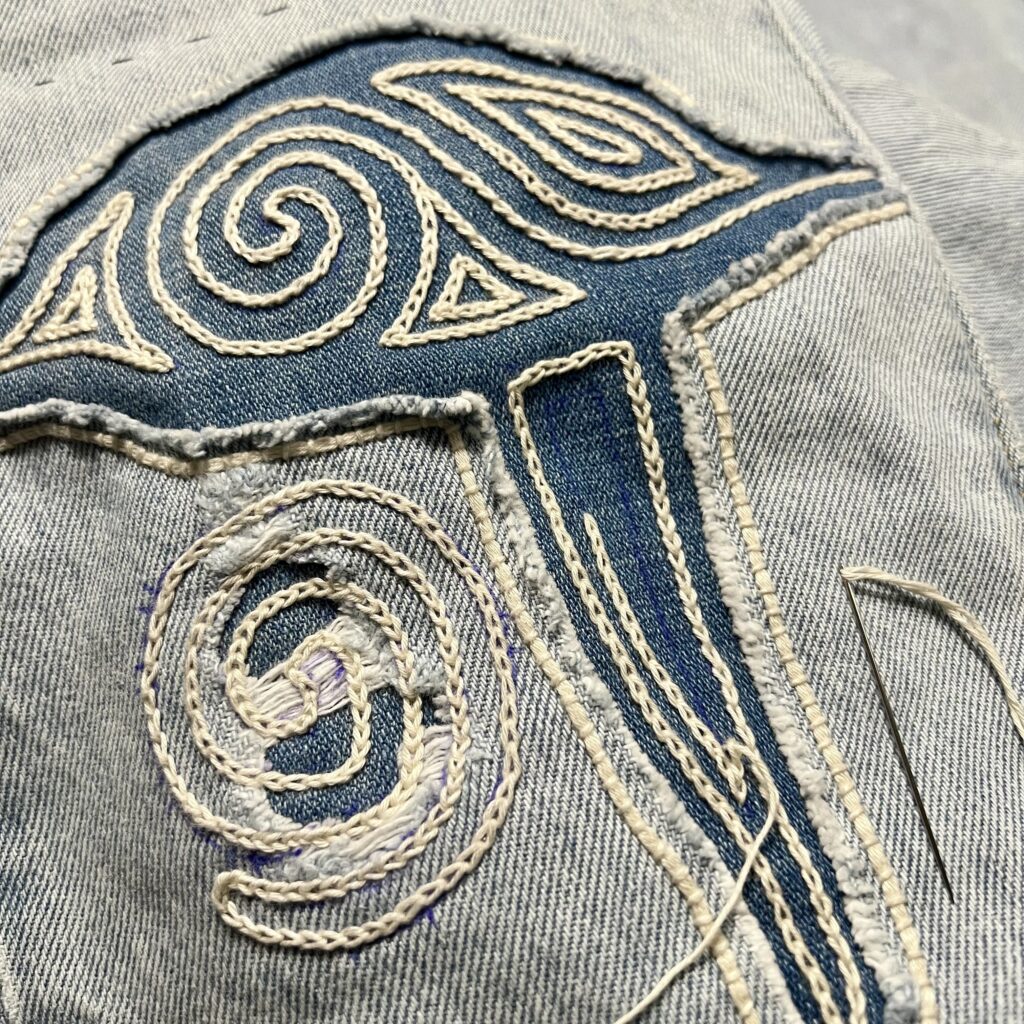
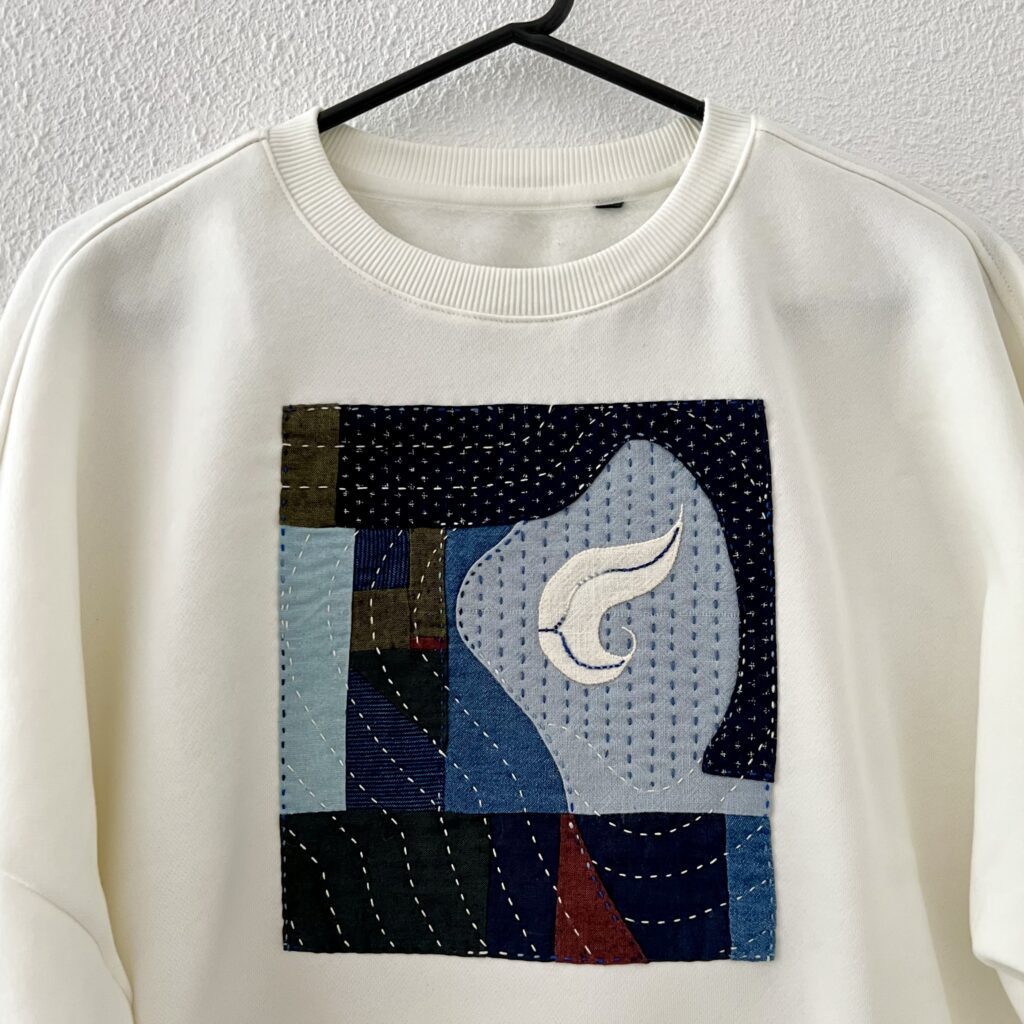
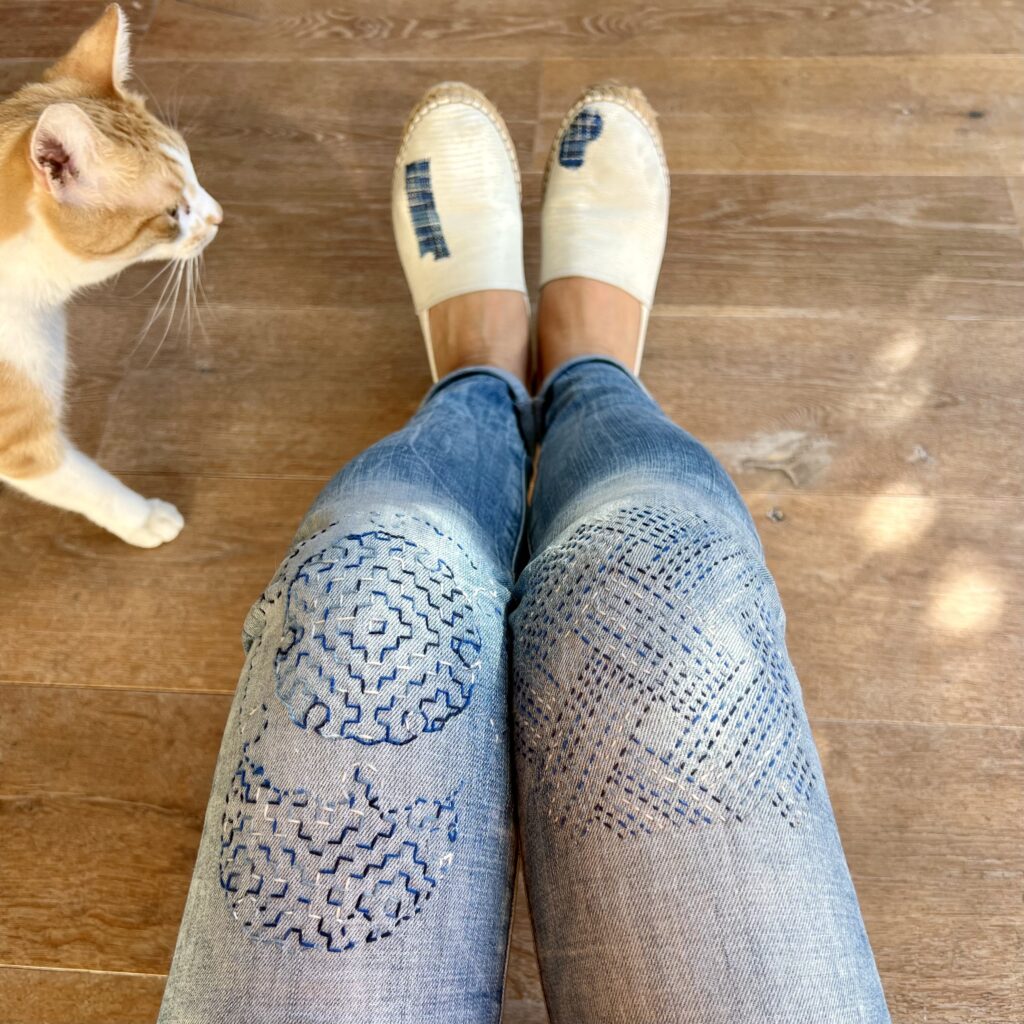
Selina’s artistic practice centers an ethos of curiosity and gratitude. She aims to minimize waste, instead finding inspired uses for the materials around her. The value of saving and repurposing materials is not only important in sustaining our environment, it is also a gesture of gratitude. Through textile making, Selina has reconnected with this childhood value. It is also grounding and centering. She says, “The moment I pick up a needle and thread and start stitching I feel quite calm. That’s my way to regain energy. It’s become part of self-care, a way to enjoy the moment.”
Selina is a passionate stitcher and researcher of history. In recent years she has delved into Sashiko designs, visible mending, and Ainu embroidery techniques. Her study of Ainu embroidery has been a way of uniting her deep interest in design and her love for historical textile research. The contemporary base of Ainu culture is in Hokkaido, Japan, which shares a similar latitude with Selina’s childhood home in China. Though her roots are not in Hokkaido, Selina finds familiarity in the corresponding climate and connects to the value placed on hand work and of making use of the materials at hand. The first time she saw a photo of an Ainu robe, she knew she had to learn more, intrigued by the intricate craft and the graphic qualities of the design. “It’s like you can’t look away,” she says, “I always want to know how things are made, so I went really deep.”
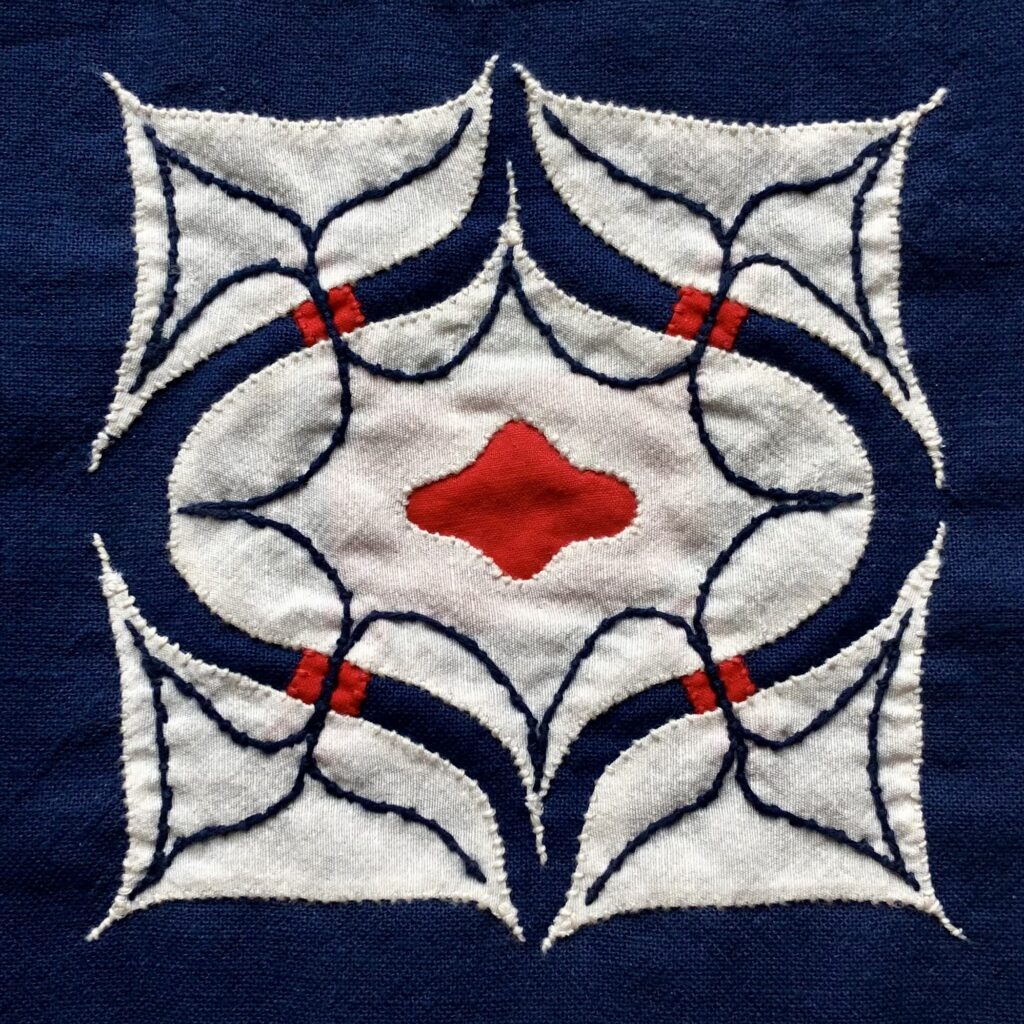
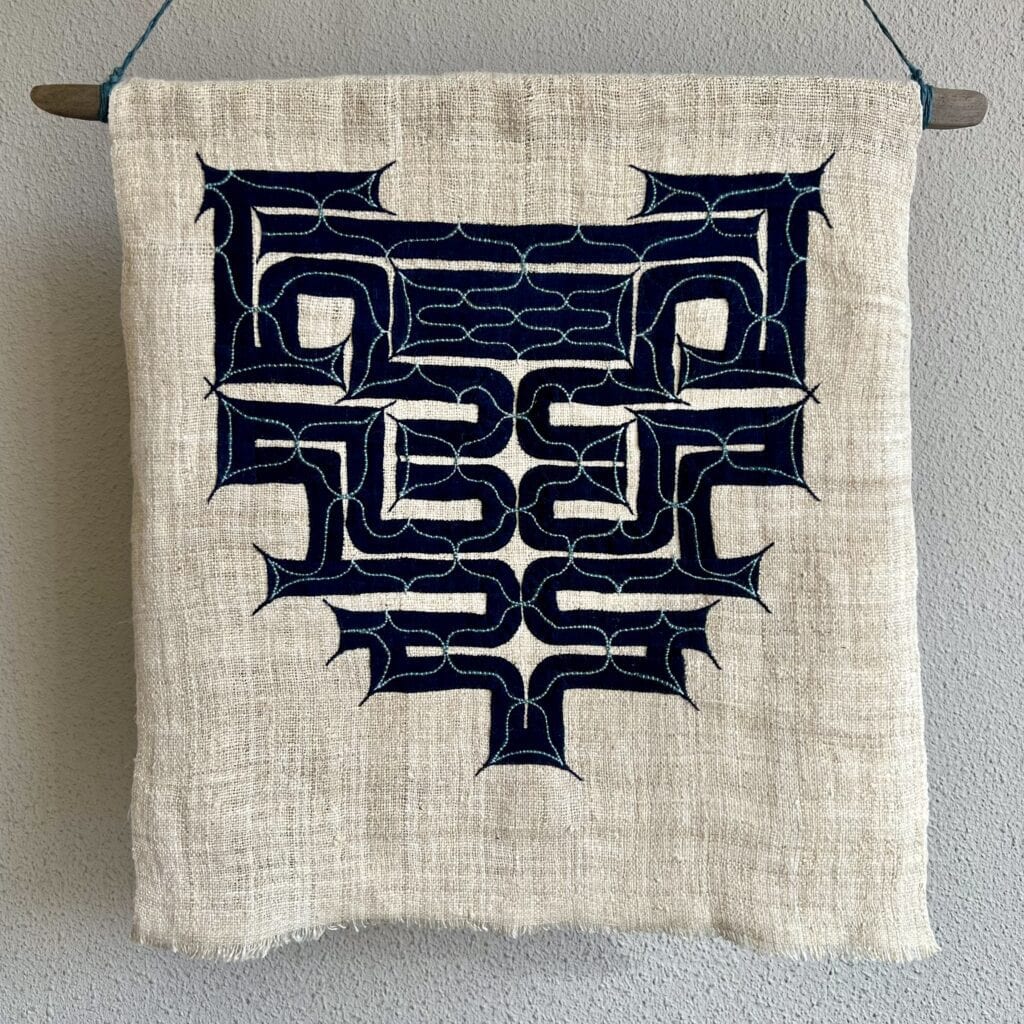
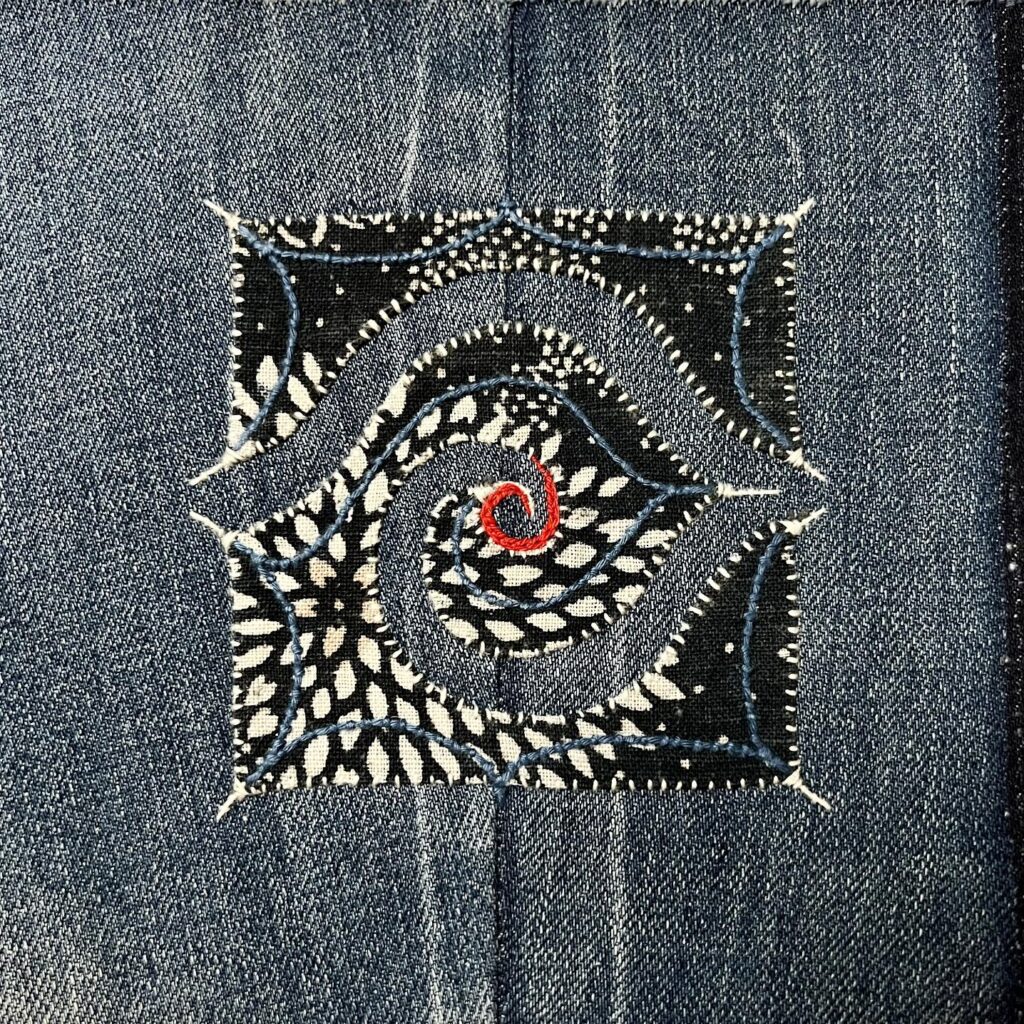
Ainu designs are resourceful, stretching small amounts of fabric to execute intricate appliquéd compositions. People and animals are never depicted, as it is believed in Ainu culture that this would trap the spirit within the patterns. Instead, the designs are primarily geometric arrangements of cloth and stitches that form winding, often symmetrical, maze-like designs to please their gods. Both Selina’s research and her historically inspired designs become trails that she follows, allowing her to learn more through close study. She learns history and technique through research and making, absorbed in the rows of interconnected stitch marks. “It’s like a journey,” she says. Presently, there is limited information in English about these ancient techniques. This purposes Selina to share the knowledge she has gathered over the years. She hopes to impart the joy of hand stitching, but with it a deep understanding of Ainu culture and their brilliant textile heritage.
Next month at Tatter, Selina will be teaching Ainu Embroidery with Kaparamip Technique, part of our World Embroidery Series!
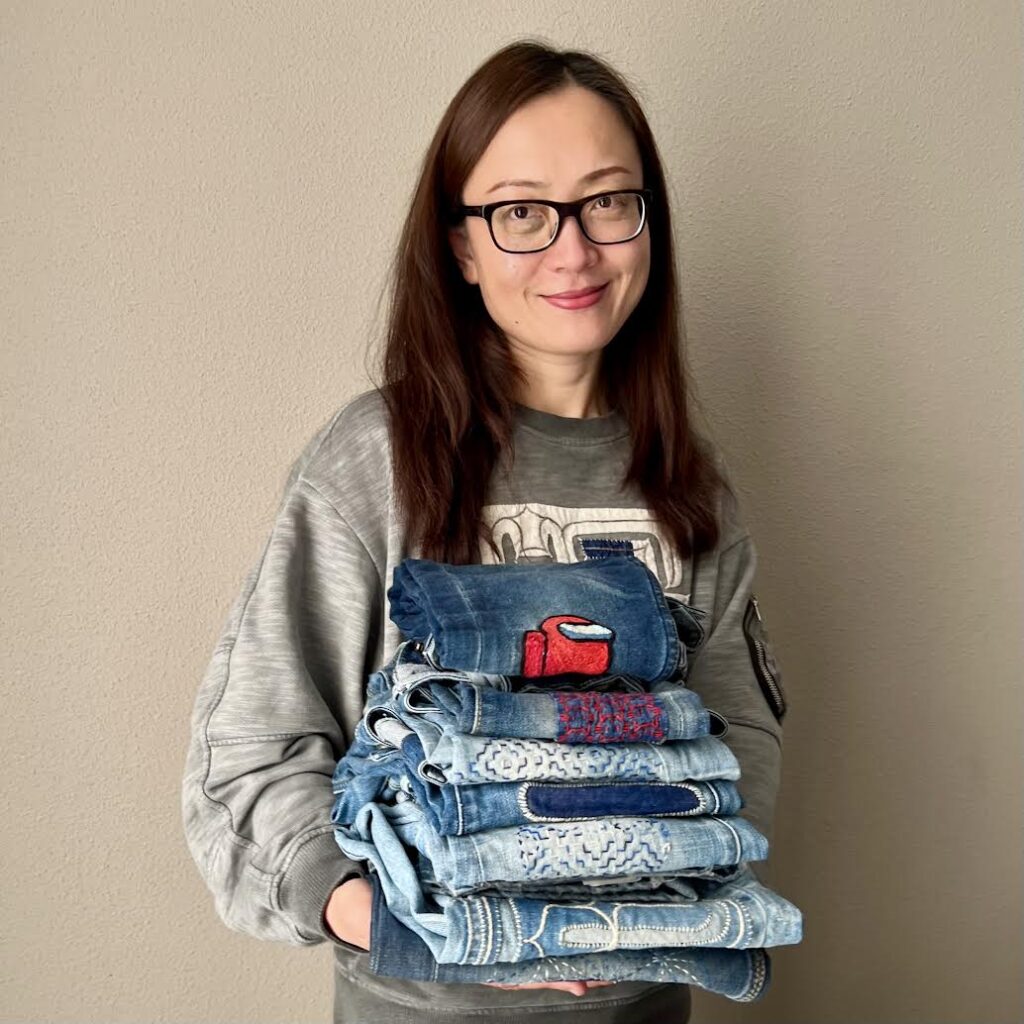
Selina Ben is a self-taught textile artist and mender based in Amsterdam, the Netherlands. With a professional background in textile product development, her passion for textiles has existed for as long as she can remember.
Selina is inspired by historical textiles around the world. Her curiosity about why the textiles were significant to a place, what materials were used and how they were made stimulates her creativity. With her practice, she hopes to preserve disappearing techniques, honor unknown makers and their cultural heritage.
Witnessing landfills overloaded with textile waste, Selina chooses to work with pre-used fabrics. All the signs of wear and tear on the fabrics are a source of inspiration for her creative process. With her hands, needles and threads, she brings the fabrics to a new phase of their lives so that people can start looking at our relationships with textiles differently.
Selina believes stitching by hand is the best form of meditation. The repetitive motions of arms, wrists, fingers, needle and thread bring peace of mind and a sense of accomplishment. As time goes by, the grounded feeling arises, the positive energy grows and a new work is born.
Selina’s practice can be found at Instagram @selinaam05.
